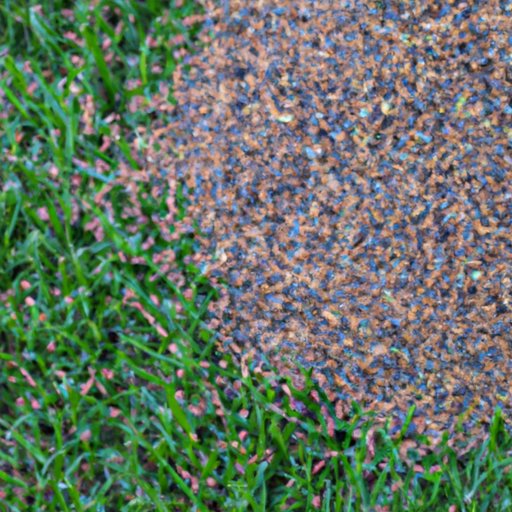The Ultimate Guide to Overseeding Your Lawn
Are you tired of a thinning lawn? Are you looking for ways to enhance its appearance and make it more disease-resistant? Overseeding might be the solution you’re looking for. In this article, we’ll discuss the benefits of overseeding and guide you through how to do it right, choose the right grass seed, and give expert tips for success. We’ll also cover common mistakes to avoid and give you a step-by-step guide that you can follow for a lush, green yard.

The Benefits of Overseeding and How to Do It Right
Overseeding involves planting new grass seed over an existing lawn to improve lawn density, appearance, and disease resistance. It’s an excellent way to revive a thinning lawn and make it more lush. You can overseed your lawn by following these steps:
- Mow your lawn shorter than usual to make it easier to distribute the seed.
- Rake the lawn to remove debris and loosen the soil. This will make it easier for the seed to penetrate the soil.
- Distribute the seed evenly over the lawn, using a broadcast spreader or by hand.
- Rake the seed into the soil lightly to ensure good seed-to-soil contact.
- Water the lawn thoroughly and keep it well-watered until the new grass has grown in.
How to Choose the Right Grass Seed for Overseeding
Choosing the right grass seed is crucial for a successful overseeding project. Consider these factors:
- Climate: Choose grass seed that is appropriate for the climate in your area.
- Soil type: Consider the underlying soil type in your lawn before choosing a seed. Different seeds grow better in certain types of soil.
- Lawn usage: Determine the amount of traffic your lawn receives from children, pets, or sports activities. Choose a durable seed that can tolerate heavy foot traffic.
- Sunlight exposure: Different grasses have different requirements for sunlight exposure. Choose seed that will grow well in your lawn’s particular location.
Some popular grass seed options include:
- Perennial ryegrass: A fine-bladed grass that is quick to establish and durable.
- Kentucky bluegrass: A dense, hardy grass that grows well in cool climates.
- Tall fescue: Drought-tolerant and able to withstand heavy foot traffic.
- Zoysia grass: A warm-season grass that is great for sandy soils and can tolerate shade well.
Expert Tips for a Successful Lawn Overseed
Here are some tips from lawn care professionals:
- Prepare the lawn properly by clearing away debris and loosening the soil.
- Select the right type of seed for your lawn’s conditions.
- Seed at the right time of year. In general, fall is the best time for overseeding.
- Use the proper seeding rate to avoid over- or under-seeding.
- Keep the soil moist by watering regularly.
The Do’s and Don’ts of Overseeding Your Lawn
Here are some common mistakes to avoid when overseeding:
- Don’t sow seed too deeply; this will prevent it from germinating properly.
- Don’t mow the lawn too short; leave at least three inches of grass to prevent weed growth.
- Don’t fertilize too soon after overseeding; wait until the new grass has grown in.
- Do water the lawn regularly to keep the soil moist.
- Do mow your lawn regularly to keep it healthy.
The Ultimate Guide to Overseeding Your Lawn in the Fall
Fall is generally considered the best time to overseed your lawn. The soil is still warm from the summer, and the cooler weather allows new grass to grow without the stress of high temperatures. Consider the following tips:
- Seed when the temperatures are still warm, but the heat of summer has passed.
- Aerate the soil before overseeding to break up compacted soil and allow for better seed-to-soil contact.
- Water the lawn regularly, and avoid letting it dry out completely. This is especially important during the first few weeks after overseeding.
5 Common Mistakes to Avoid When Overseeding Your Lawn
Here’s a recap of the most common mistakes to avoid when overseeding:
- Sowing seed too deeply
- Mowing the lawn too short
- Fertilizing too soon after overseeding
- Not watering the lawn regularly
- Over- or under-seeding
A Step-by-Step Guide to Overseeding Your Lawn for a Lush, Green Yard
To recap, here’s a step-by-step guide to overseeding your lawn:
- Mow your lawn shorter than usual to make it easier to distribute the seed.
- Rake the lawn to remove debris and loosen the soil.
- Choose the right grass seed for your lawn’s conditions.
- Distribute the seed evenly over the lawn.
- Rake the seed into the soil lightly to ensure good seed-to-soil contact.
- Water the lawn thoroughly and keep it well-watered until the new grass has grown in.
- Wait to fertilize until the new grass has grown in and established itself.
- Mow your lawn regularly to keep it healthy and discourage weed growth.
Conclusion
Overseeding can do wonders for a thinning lawn, improving density, appearance, and disease resistance. With the right type of grass seed and proper care, overseeding can help turn your lawn into a lush, green paradise. Follow the step-by-step guide we’ve provided, and remember to avoid common mistakes like over-seeding or under-seeding, sowing too deeply, fertilizing too soon, and not watering enough. With a little patience and dedication, you can overseed your lawn and enjoy a revitalized yard that you can be proud of for years to come.
